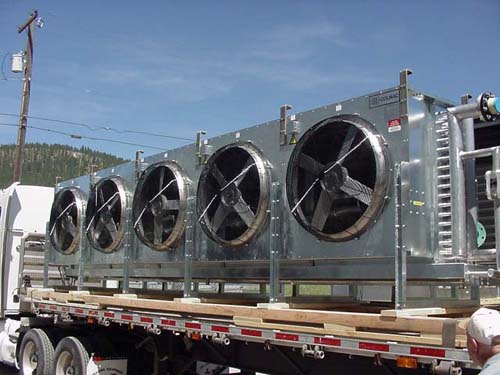What is Industrial Cooling?
Industrial cooling is the capability for a company or a manufacturer in any given industry to keep its machinery and processes cool whenever needed. That is why industrial cooling systems are considered to be very high grade systems designed to provide instant cooling through a variety of methods.

What are the Types of Industrial Cooling?
Industrial cooling systems come 3 different forms and that means they cool whatever they need to cool in a variety of 3 ways. These include water, air and evaporative. Each is designed for very specific applications which is why there is rarely a situation where one size fits all because depending on the severity of the heat that is involved, different levels of industrial cooling will be necessary.
Typically these 3 forms of industrial cooling come within 4 subcategories which are reciprocating, centrifugal, screw driven and finally absorption. The first 3 subcategories are often found in mechanical industrial cooling systems whilst the last is powered by steam and kinetic energy generated from various moving parts.
What are the Components of a Standard Industrial Cooling Machine?
For every mechanical based industrial cooling machine, the metal compression is comprised of four components that allow the refrigeration to pass. The first being the evaporator, second compressor, third condenser and finally the expansion valve. It should come as no surprise for you to know that the chiller itself works at a lower pressure level and temperature than the evaporator.
How does a Basic Industrial Cooling Machine Work?
For an ideal cycle, the component that works to fold is the condenser but before any sort of condensation even begins, any high pressure vapor must first be brought to a lower pressure point, in other words, it needs to be de-superheated first. There must first be a certain amount of heat that must first pass through from the refrigerant itself to lower the temperature to one that is suitable for saturation.
The refrigerant will be in liquid form now but will be pumped to a high pressure and temperature then it will undergo the final change before it can become a heat transfer medium; and that is it has to have a reduction in temperature.
That is why in order to have a reduction in temperature occur, there must first be a reduction in the pressure and then finally some type of restriction must first be in place for this to occur. This is why there is a thermostatic expansion valve installed, as it allows for adjustable restriction.










Comments are closed.